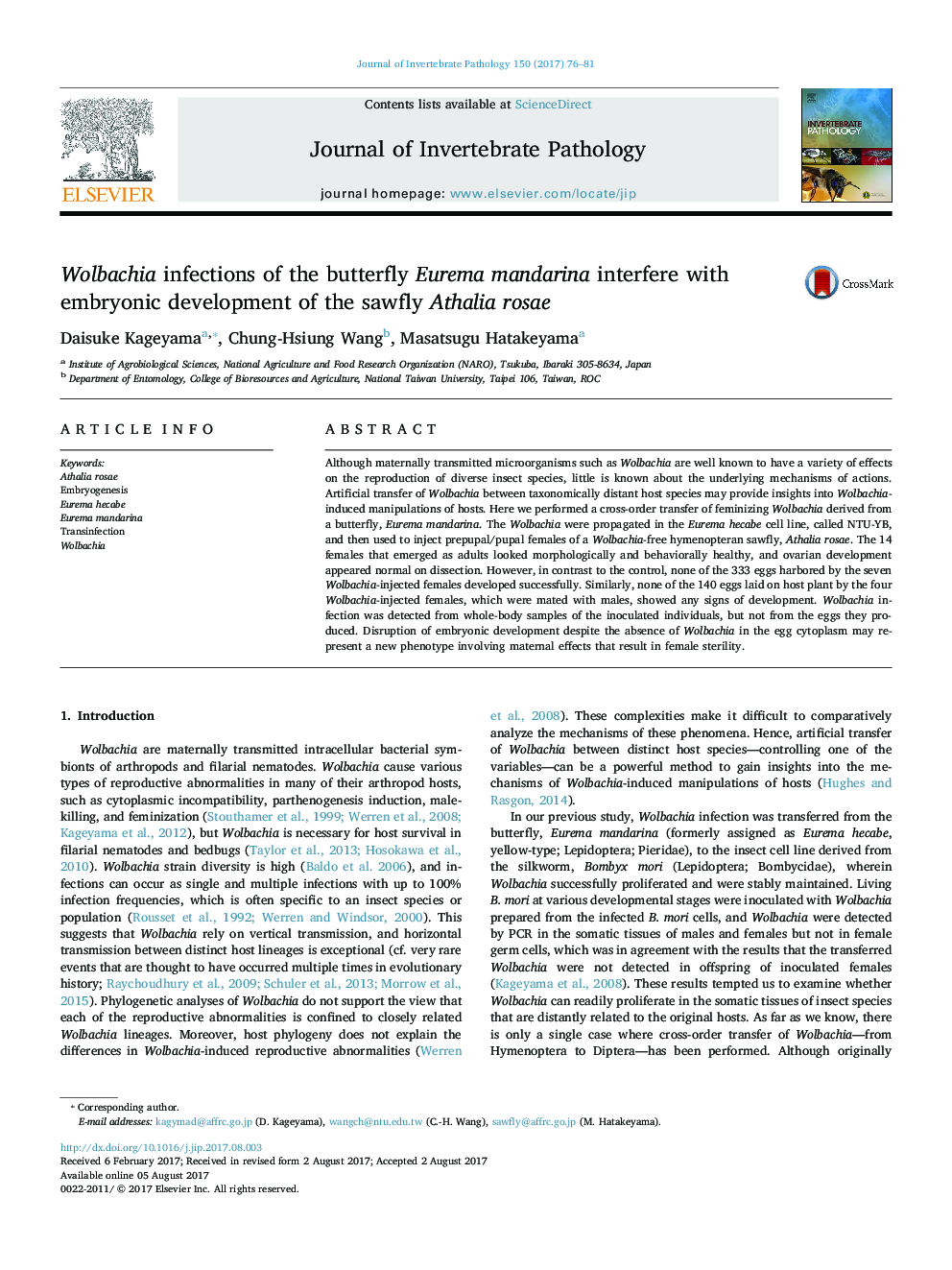| Article ID | Journal | Published Year | Pages | File Type |
|---|---|---|---|---|
| 5766911 | Journal of Invertebrate Pathology | 2017 | 6 Pages |
â¢Cross-order transfer of Wolbachia (from Lepidoptera to Hymenoptera) was performed.â¢Transferred Wolbachia proliferated in the hymenopteran soma.â¢Asexual embryos produced by the recipient did not start development.â¢Eggs produced by the mated recipient did not hatch.â¢Developmental defect was induced despite the absence of Wolbachia in embryos.
Although maternally transmitted microorganisms such as Wolbachia are well known to have a variety of effects on the reproduction of diverse insect species, little is known about the underlying mechanisms of actions. Artificial transfer of Wolbachia between taxonomically distant host species may provide insights into Wolbachia-induced manipulations of hosts. Here we performed a cross-order transfer of feminizing Wolbachia derived from a butterfly, Eurema mandarina. The Wolbachia were propagated in the Eurema hecabe cell line, called NTU-YB, and then used to inject prepupal/pupal females of a Wolbachia-free hymenopteran sawfly, Athalia rosae. The 14 females that emerged as adults looked morphologically and behaviorally healthy, and ovarian development appeared normal on dissection. However, in contrast to the control, none of the 333 eggs harbored by the seven Wolbachia-injected females developed successfully. Similarly, none of the 140 eggs laid on host plant by the four Wolbachia-injected females, which were mated with males, showed any signs of development. Wolbachia infection was detected from whole-body samples of the inoculated individuals, but not from the eggs they produced. Disruption of embryonic development despite the absence of Wolbachia in the egg cytoplasm may represent a new phenotype involving maternal effects that result in female sterility.
Graphical abstractDownload high-res image (74KB)Download full-size image
